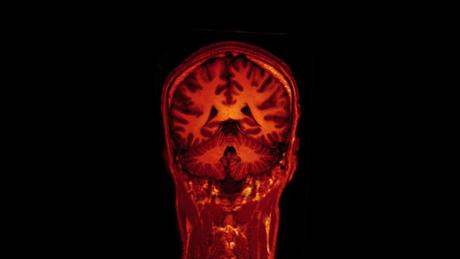Scientists Win Nobel For Discovering GPS In The Brain

John O’Keefe, a British scientist, discovered the concept of “place cells” in the 1970s. He found that in rats, certain cells in the hippocampus fired whenever they were in a certain place. This allowed the rat to situate itself in its environment.
A Norwegian husband-wife team of humble origins, May-Britt and Edvard Moser, followed up over three decades later with a discovery in 2005 about a hexagonal grid pattern rats used to map their surroundings. Certain “grid cells” in the brain fired to create a mental map of the rat’s environment.
When first exposed to the revolutionary idea of grid cells forming a complex, invisible mental map of a creature’s surroundings, USC Associate Professor of Biomedical Engineering and Neuroscience Bartlett Mel wasn’t convinced of the study’s credibility.
When a student first brought up the findings in class, "I honestly felt frustrated that they could have let this ridiculous and impossible result through and published it. I thought to myself, ‘This is impossible,’” Mel said. Despite his incredulity, the study was proven to be valid.
At its most basic level, the discovery is part of mapping the structure of the brain and what functions each part serve. Although Caleb Finch, USC Professor of Neurobiology and Gerontology, said that the researchers had conducted “beautiful science,” he also said that the research wasn’t particularly surprising.
“It isn’t revolutionary. It’s part of the mapping of the brain functions that has been going on for over 150 years,” Finch said.
SEE ALSO: Discoverer Of The "God Particle' Awarded Nobel Prize in Physics
Beyond understanding how the brain navigates an organism’s surroundings, the discovery has far-reaching implications for understanding the brain as a whole. The Nobel Organization said that “it has opened new avenues for understanding other cognitive processes, such as memory, thinking and planning,” in a press release on the topic.
One of these potential impacts is the relation to Alzheimer’s. The spatial navigation system is found in the hippocampus, which is one of the first areas of the brain to deteriorate with the onset of Alzheimer’s. This causes victims to get lost and feel disoriented easily. There are hopes that with better understanding of the brain's navigation system, a better understanding of how to prevent or treat the disease can be reached.
However, Finch, founding director of USC's Alzheimer Disease Research Center in 1984, is wary of jumping to conclusions about the implications of this navigation discovery. His team has been working on the same neural circuitry involved in navigation, and have been trying to figure out exactly why that specific area of the brain degenerates first.
In relation to whether this insight into the brain function will lead to medical treatments, Finch said, “Not immediately. It adds depth to the understanding of this function and how some of the clinical symptoms might result from the death of these neurons.”
SEE ALSO: Nobel Prize 2013 — The Winners So Far
Further, this discovery about neurons that dictate navigation have opened up discussions between experimental data collectors and theorists in the area. Theorists need data to support their hypotheses, and data needs theorists to explain results. “This discovery promoted a kind of interdisciplinary cooperation,” Mel said.
The study was conducted on rats, but evidence has indicated that grid and place cells also exist in humans. USC Assistant Biology Professor Scott Kanoski also conducts research on the hippocampus using rats. “I may be biased since I use rodent models, but I find them applicable to humans. Since they are mammals, they have similar physiological and biological processes, and generally have been a very useful model for studying areas that are directly relevant to human health,” Kanoski said.
For the everyday man on the street, this discovery may not have an immediate impact. Despite this, Mel maintains that it is still crucially important to learn about the brain.
“Your brain is who you are. It’s your most important organ. It’s the thing you would least want to give up and still be alive. If someone took out your heart, you could get another one and still feel like you, but you can’t do that with the brain,” Mel said.
Reach Staff Reporter Rachel Cohrs here.



